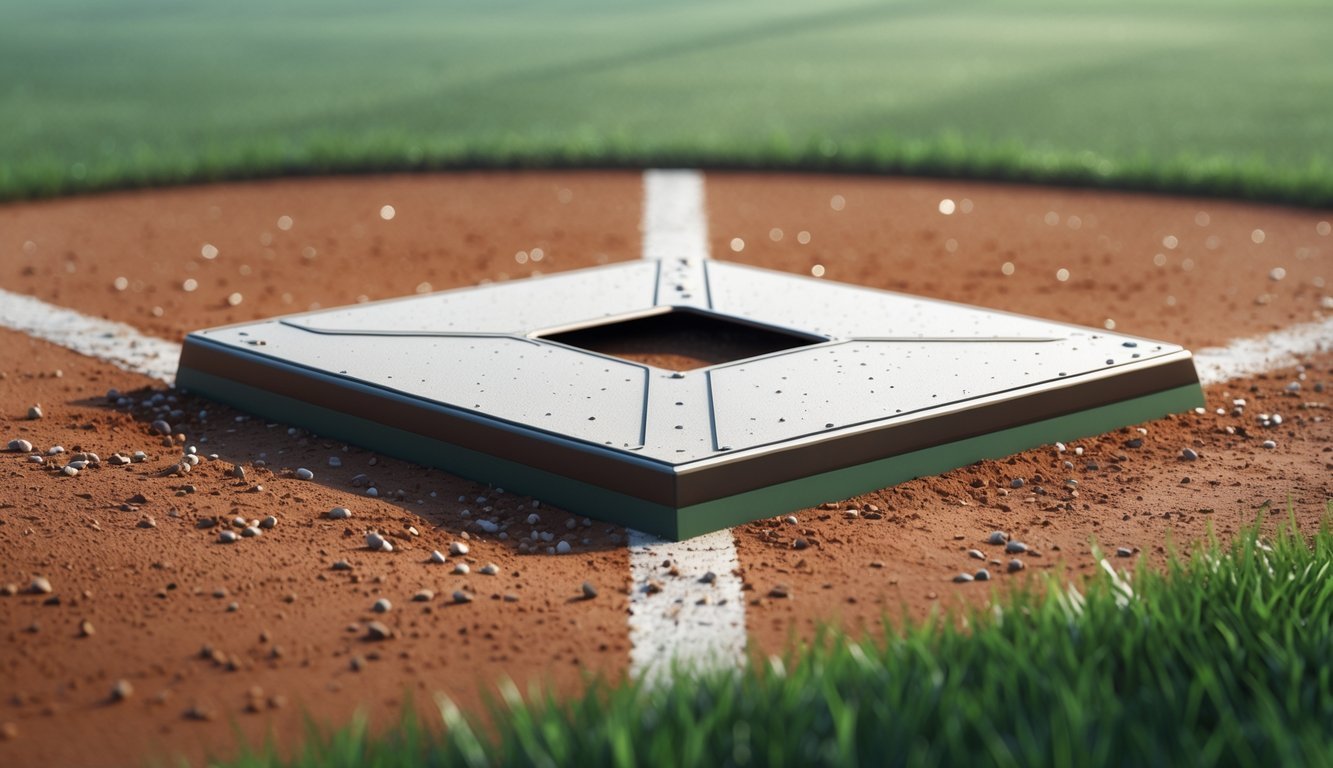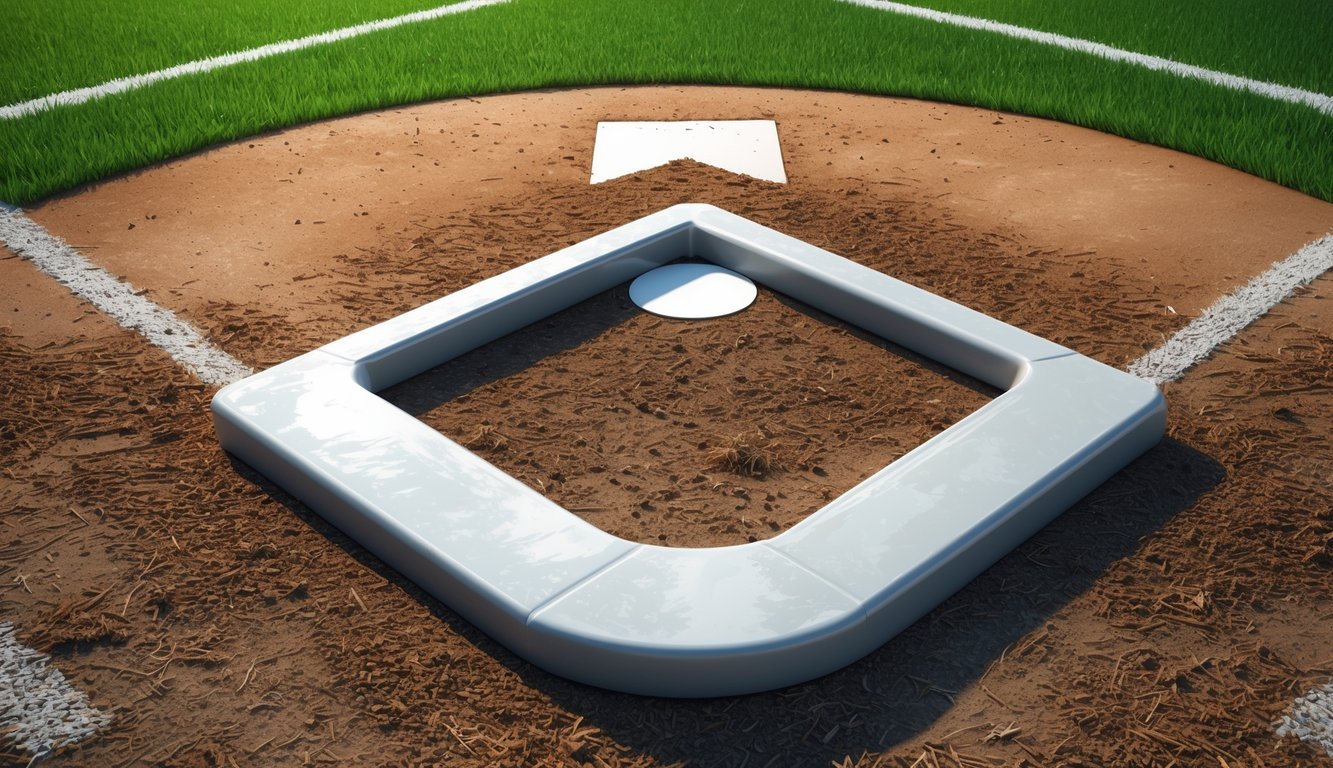PsychNewsDaily Publishers
100 Summit Drive
Burlington, MA, 01803
Telephone: (320) 349-2484
PsychNewsDaily Publishers
100 Summit Drive
Burlington, MA, 01803
Telephone: (320) 349-2484
Home plate is a five-sided rubber slab, 17 inches wide, marking the start and finish of plays in baseball and softball, crucial for scoring runs.

If you’ve ever watched a baseball game, you’ve probably noticed the batter standing on something called home plate.
Home plate is a five-sided rubber slab that marks where the batter stands and where runners must touch to score. It’s a small part of the field, but honestly, it shapes how baseball is played in a big way.
You’ll find this plate at one corner of the baseball diamond. It’s where the action starts and ends.
They make it from molded rubber, so it can take a beating. The size and shape aren’t random—they fit the rules perfectly.
If you get to know home plate, you’ll start to see why the game works the way it does. Maybe that’s what makes baseball so fun to watch or play.

A lot happens at home plate during a game. It marks the start and finish for every run.
Players and umpires line up based on its position. If you know where home plate sits, following the game gets a lot easier.
A runner has to reach home plate to score a run. When the batter hits the ball, they dash through first, second, and third base, hoping to make it back to home plate for a point.
The pitcher throws the ball toward home plate. The batter stands nearby in the batter’s box, trying to smack the ball and avoid strikes from the umpire.
You’ll see the catcher crouched behind home plate, ready to grab missed pitches or make a play. This little slab decides if a runner is safe or out—so much of the drama happens right there.
Home plate sits flush with the field’s surface at the corner of the diamond. The other bases form a square around it, all connected by baselines.
It’s right at the center of the foul territory limits, where the batter tries to hit the ball. The batter’s box lines up next to home plate, showing where the batter needs to stand.
Umpires use home plate to get a clear view of pitches and plays. The plate has to be flat and stable—pitchers push off it, and batters need to balance when swinging.
In softball, home plate looks pretty similar, though it’s usually a bit smaller. The rules for placing it are about the same, so the start and end points for runs stay clear.
Like in baseball, the pitcher throws from a set distance toward home plate. That keeps the game flowing.
You’ll spot home plate in some youth and amateur leagues too, sometimes even in training drills or coaching. American football doesn’t use home plate or bases, so these ideas really belong to baseball and softball.
When you know about home plate, you get how plays start and end in these sports.

Home plate has a unique shape and size, and you’ll find it made from tough materials to stand up to the game. Its design helps players and umpires stick to the rules.
Home plate is a pentagon, so it’s got five sides. It kind of looks like a square with two corners chopped off, making a point at the bottom.
That point faces the pitcher’s mound. The shape pops out on the field, marking where the batter stands and the catcher waits.
It’s more than just a slab—it’s a symbol in baseball, showing where every play starts and ends.
Home plate measures 17 inches across the front, which faces the pitcher. The two sides next to the front are each 8.5 inches long.
The angled back edges form a point that’s about 12 inches deep from front to back. You’ll see it placed right in the center of the diamond, where the foul lines meet.
This size and spot help pitchers, batters, and umpires judge balls and strikes.
| Dimension | Measurement |
|---|---|
| Front width | 17 inches (43.18 cm) |
| Side length | 8.5 inches (21.59 cm) |
| Rear point depth | 12 inches (30.48 cm) |
Most home plates are made of white rubber, giving you a flat, tough surface that can handle constant action. The rubber is usually molded, and sometimes there’s a beveled edge to cut down on injury risk and keep the plate snug in the ground.
Some have a canvas or metal base underneath for extra strength, so they don’t move around mid-game. The bright white color helps everyone spot it against the dirt.
If you check out a pro field, like in the National League, you’ll notice steel spikes underneath to hold the plate in place. The whole design is built for durability and safety.

Curious about home plate? Here are some quick answers about its size, shape, and even where to find baseball-themed restaurants or clip art.
Home plate is a five-sided figure. It’s 17 inches wide across the front and 8.5 inches deep on each side.
The back forms a point in the center.
You’ll usually find burgers, wings, and classic ballpark snacks. Loaded fries and specialty sandwiches are also big hits.
Try map apps like Google Maps. Just search “Home Plate restaurant” plus your city or zip code.
You’ll see reviews and hours right there.
Lots of free clip art websites have baseball shapes. You can also check out educational and sports resource sites for simple home plate images.
Yes, they are. Softball home plates are usually smaller, around 15 inches wide, though the size can vary by league.
People really seem to love the barbecue plates and burgers here. A lot of folks also talk about the hearty breakfast options—maybe it’s the portion size or just the way they cook them.